The Metropolitan Museum of Art typically admits 5,000 visitors per hour. During the pandemic they've reduced that to 2,000, reservations required. But the galleries were delightfully uncogested, a first in my experience. I felt like Angie Dickinson in "Dressed To Kill." I'm standing in front of the first quilt acquired by the museum. Elizabeth Horne Clarkson sewed it in 1830.
The quilt is part of the Met's 150th anniversary show. A photo of Marilyn Monroe by Richard Avedon greets visitors to the gallery.
A 19th century Congo power figure stares her down.
"The Little Fourteen-Year-Old Dancer" (1922) by Edgar Degas. Her tutu is contemporary.
Before Gertrude Stein donated this striking portrait, Picasso was absent from the museum's collection.
El Anatsui collected a lot of alcoholic beverage caps to create "Dusasa II" in 2007.
IMHO, "folk" art has been given short shrift far too long. Joshua Johnson painted Emma Van Name in 1805 but it took the museum more than 200 years to acquire this work by America's earliest known black, professional painter.
Andy Warhol screened Mona after the Louvre loaned the Met the DaVinci original in the early 60s. Little did anyone guess Pittsburgh's favorite son would be just as famous as the Italian master one day.
This silk textile, called Manhattan by designer Clayton Knight, captures the sophistication of the Art Deco period.
Tim, who works in the musical instruments department of the Met, showed me "Fanfare" an exhibit of brass instruments he helped design and install. Tim also worked on "Play It Loud," a rock 'n roll exhibit I loved. He actually mounted Joni Mitchell's guitar!
His Boy Scout bugle, tasseled in red, made it into "Fanfare," quite a coup in the museum world!
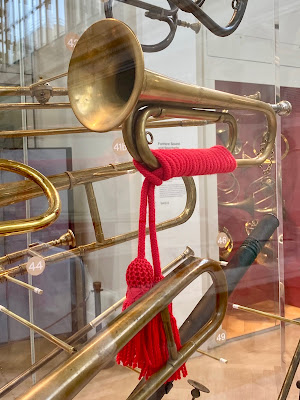
Afterward we went to the museum's roof to see "Lattice Detour" by Hector Zamora. Meh.
I couldn't visit without taking a peek at the Gerhard Richter's disturbing "Birkenau."

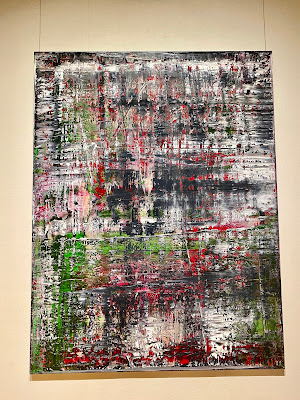



The gallery directly below exhibited Dutch masters. Vermeer's "Study of a Young Woman" (1665-67).
Rembrandt's "Portrait of Herman Doomer" (1640).
And "Moses Striking the Rock" by Abraham Bloemaert (1596).
I passed Egyptian and Roman art on my way out. The pandemic must seem like a blip in time to these objects.


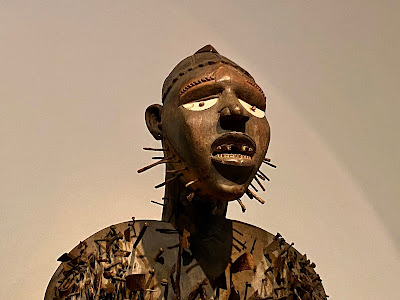
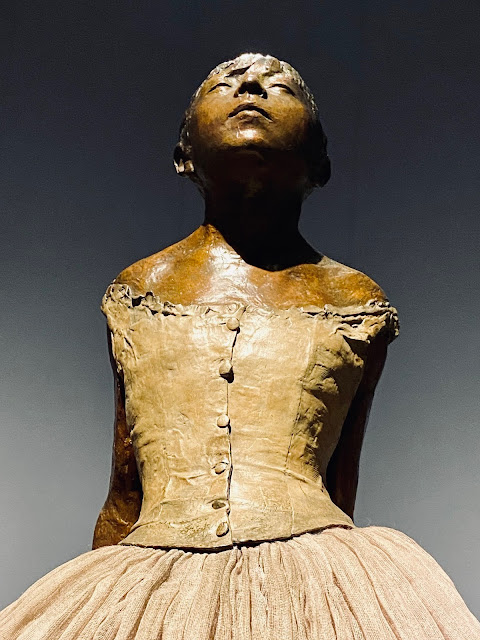
















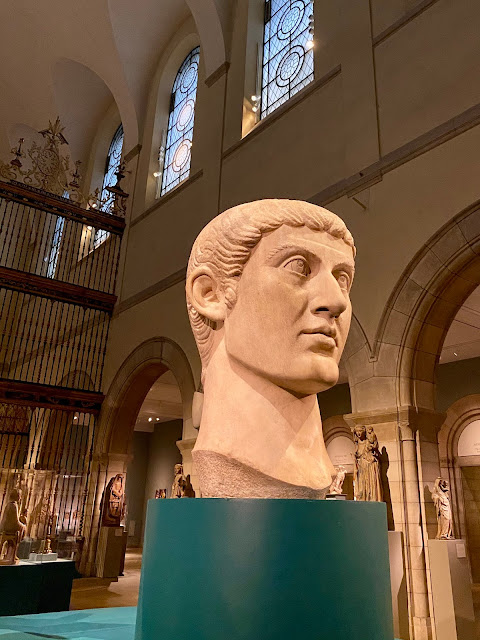
No comments:
Post a Comment